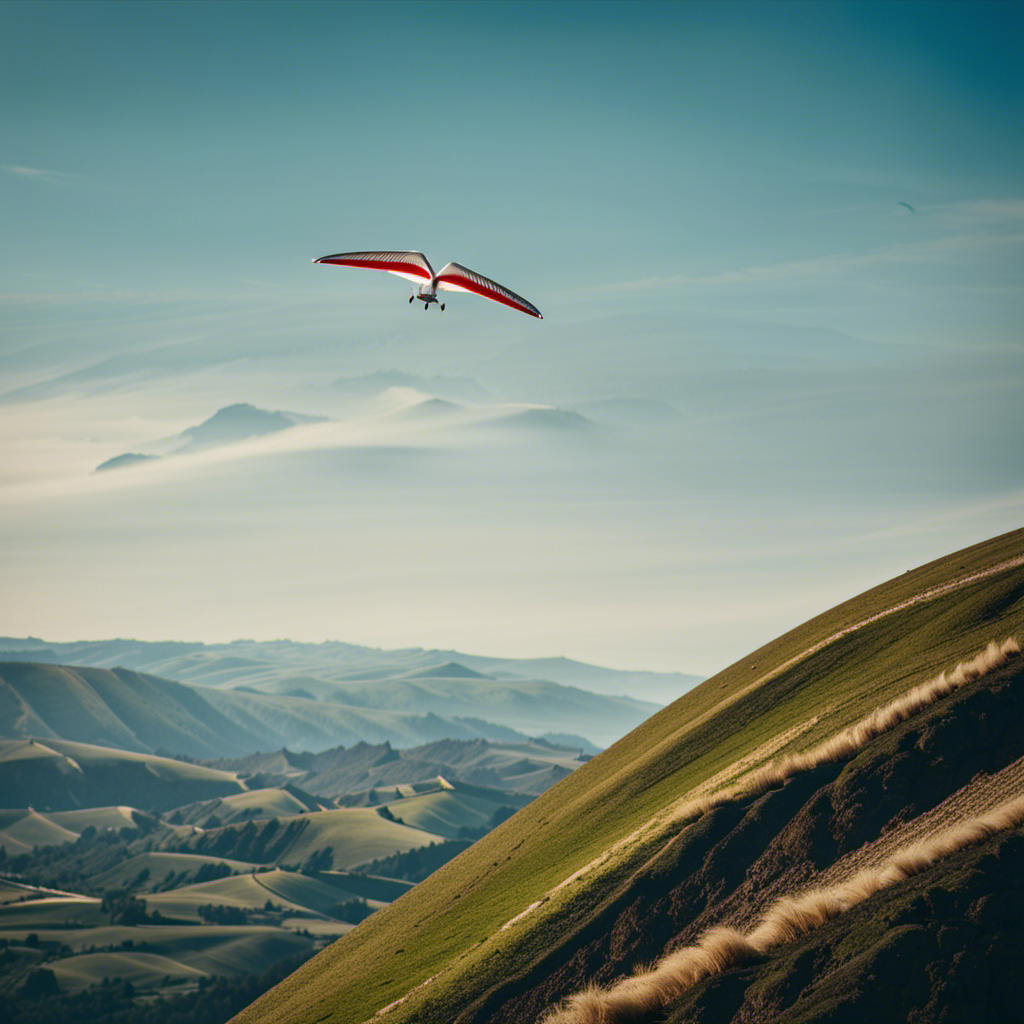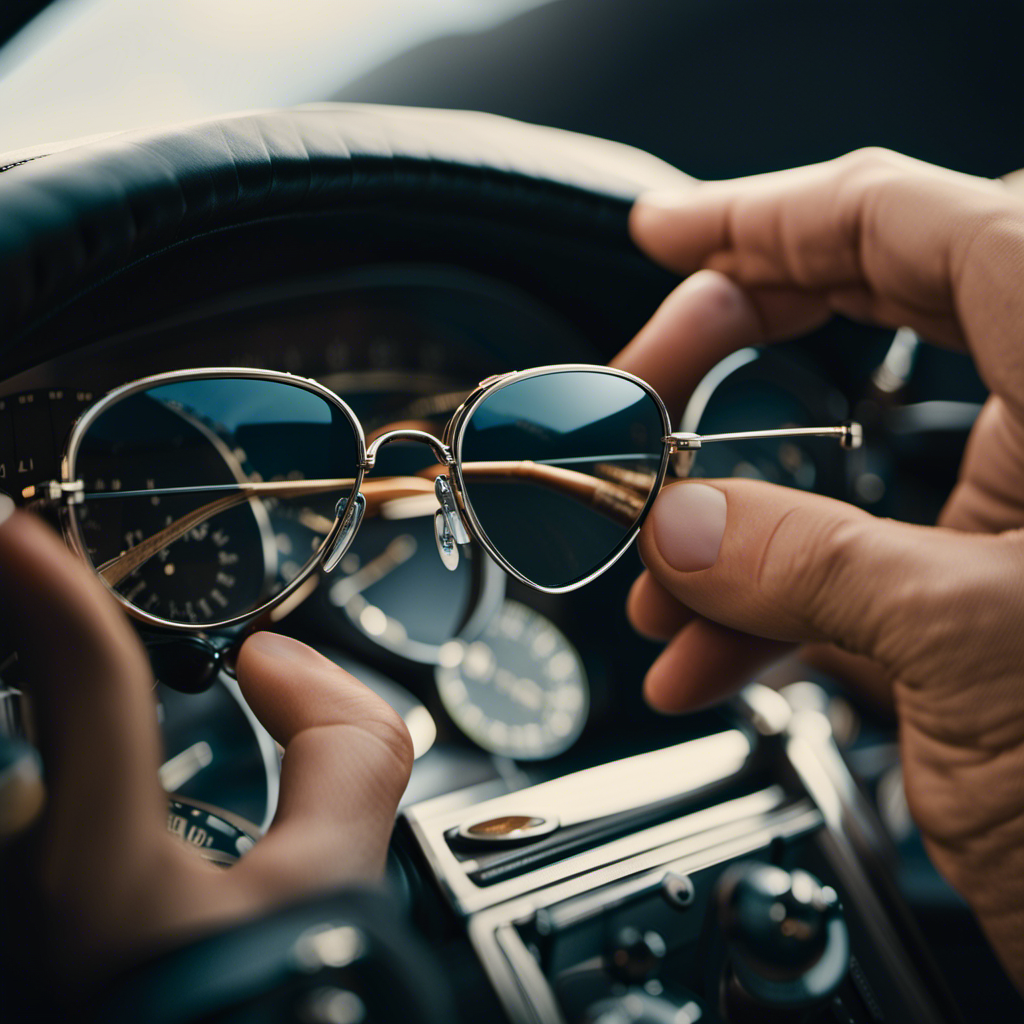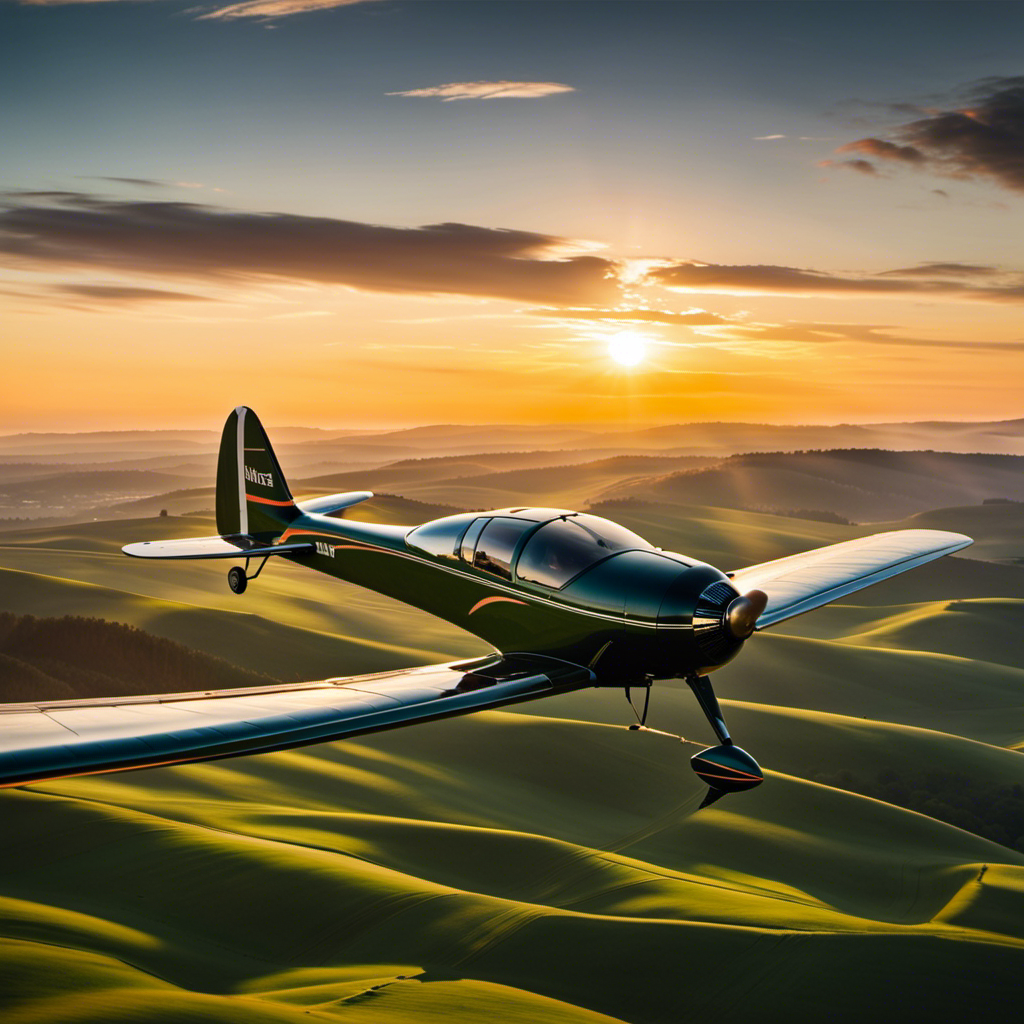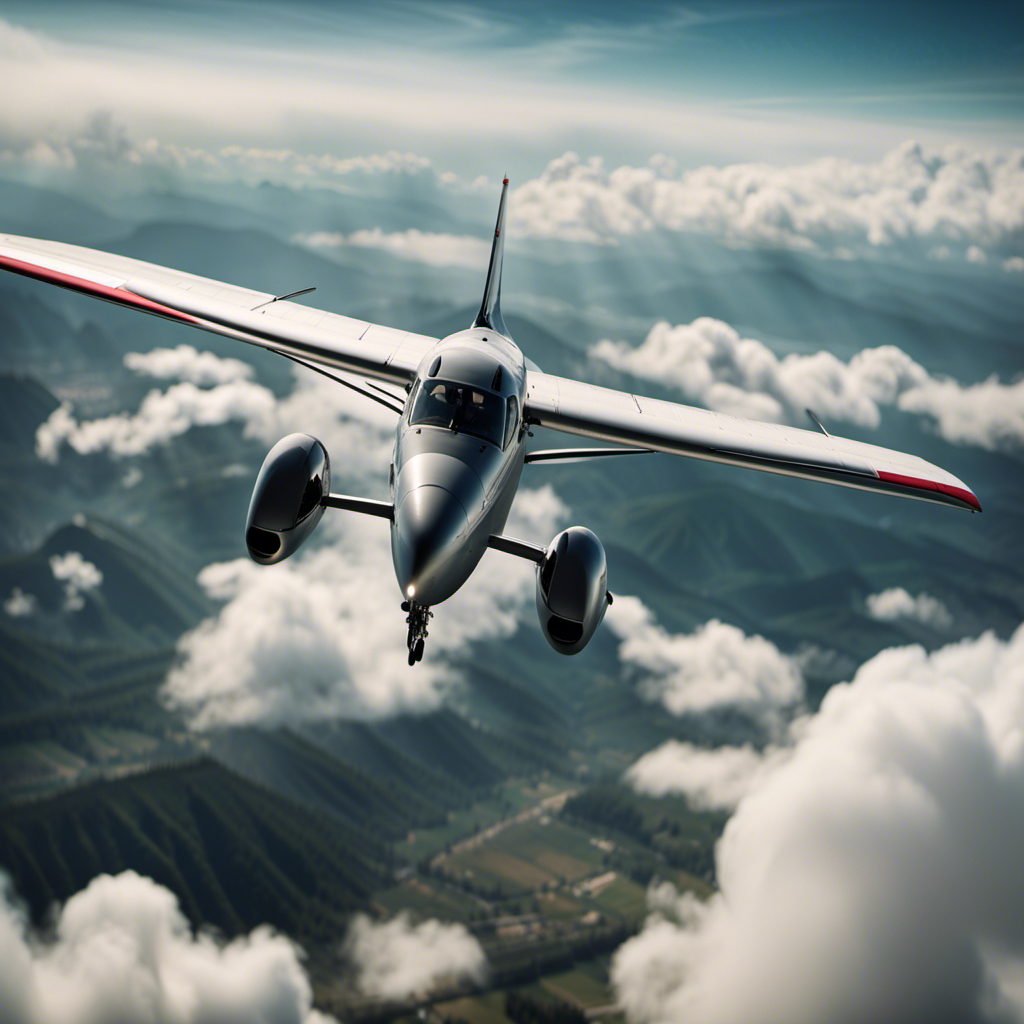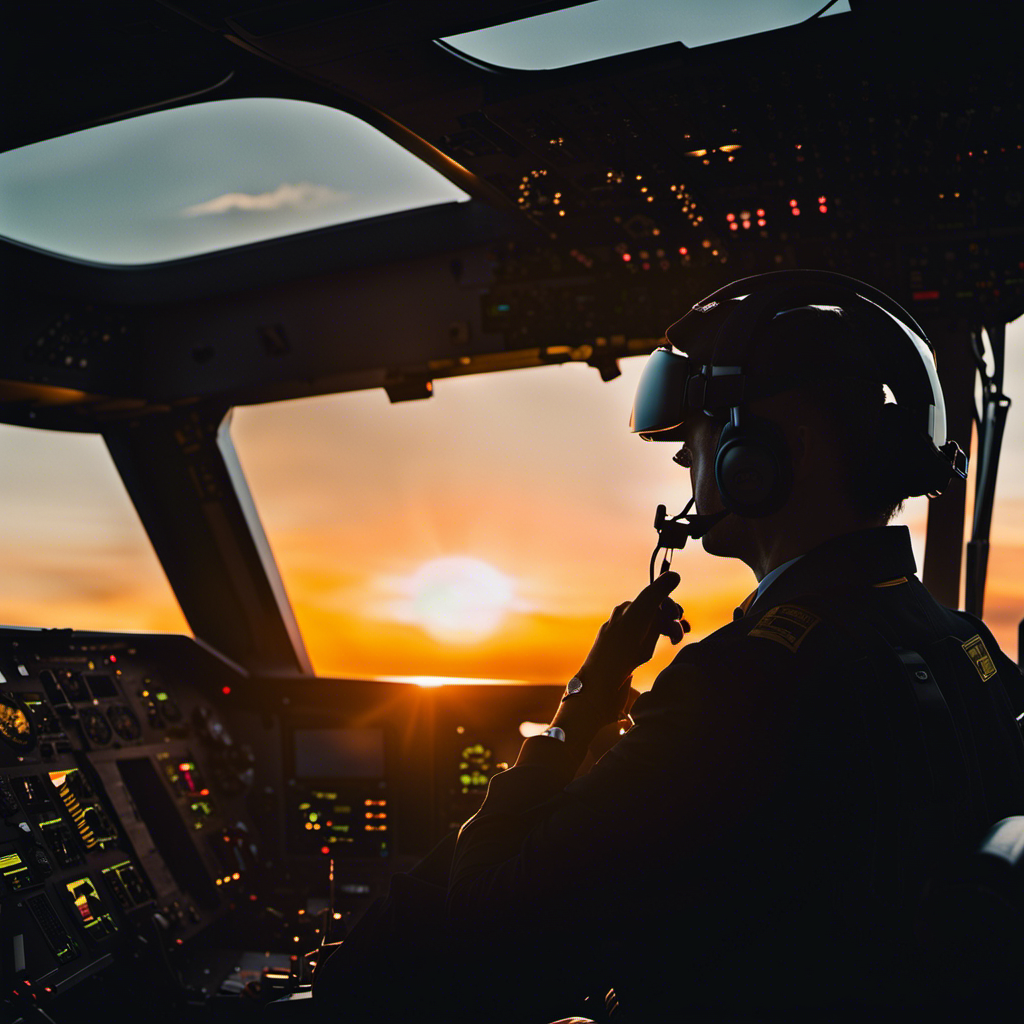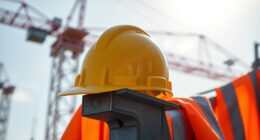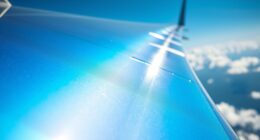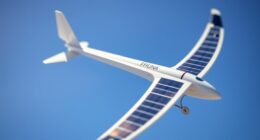You may be curious: How can a glider manage to lift off without any engine assistance? Although it may seem like a daunting task, rest assured that it is entirely achievable.
In fact, glider flight is a fascinating combination of physics, skill, and strategy. In this article, we will delve into the world of glider aviation, exploring the lift and drag forces at play, the techniques used for launching and gaining altitude, and the various factors that contribute to a safe and efficient glide.
So buckle up and prepare to be amazed by the incredible capabilities of these engineless wonders.
Key Takeaways
- Gliders rely on lift and drag forces to take off without an engine.
- Launching techniques such as bungee launching are used to achieve initial altitude.
- Glider design with high glide ratios, sleek shapes, and winglets help in takeoff without an engine.
- Control surfaces like ailerons, elevator, and rudder are manipulated to steer and control the glider during takeoff.
Lift and Drag Forces in Glider Flight
Lift and drag forces play a crucial role in how a glider takes off without an engine. Glider aerodynamics is all about optimizing lift to keep the glider airborne and minimizing drag to maintain its speed.
Lift is generated by the shape of the wings, which creates a pressure difference between the upper and lower surfaces. By adjusting the angle of attack, the pilot can control the lift force. To optimize lift, gliders are designed with long, slender wings and a high aspect ratio.
On the other hand, drag is the force that opposes the motion of the glider. It is caused by factors like air resistance and the shape of the glider. Minimizing drag is essential for maintaining the glider’s speed and maximizing its range.
Now, let’s move on to the importance of weight and balance in glider flight.
The Importance of Weight and Balance
When it comes to glider performance, weight plays a crucial role. The amount of weight carried by a glider directly affects its ability to climb, glide, and maneuver. Achieving proper balance is also essential for safe flight, as an imbalanced glider can lead to instability and potential accidents.
Therefore, understanding how weight affects glider performance and ensuring proper balance is of utmost importance in the world of glider aviation.
How Weight Affects Glider Performance
To improve your glider’s performance, you should understand how weight affects it. Glider weight distribution plays a crucial role in its overall performance and handling characteristics. The impact of cargo on glider performance cannot be underestimated. Let’s take a closer look at how weight distribution affects the glider’s flight.
| Weight Distribution | Effects on Glider Performance |
|---|---|
| Forward CG | Decreased stability and increased maneuverability. |
| Aft CG | Increased stability but decreased maneuverability. |
| Balanced CG | Optimal stability and maneuverability. |
As you can see from the table, the position of the center of gravity (CG) significantly influences the glider’s behavior in flight. A forward CG enhances maneuverability but sacrifices stability, while an aft CG provides stability at the expense of maneuverability. Achieving proper balance for safe flight is crucial for optimal glider performance, ensuring a smooth and controlled flight experience.
Achieving Proper Balance for Safe Flight
You need to achieve proper balance for a safe flight by ensuring the center of gravity is in the optimal position. Proper weight distribution plays a crucial role in the aerodynamic design of a glider. Here are three key factors to consider:
-
Load Distribution: Distributing the weight evenly across the glider is essential for maintaining stability during flight. Uneven weight distribution can cause the glider to become unbalanced, leading to potential control issues.
-
Center of Gravity Position: The center of gravity should be located within a specified range to maintain control and stability. Any significant deviation from this optimal position can affect the glider’s handling and maneuverability.
-
Ballast Management: Adjusting the ballast, such as water or sand bags, can help optimize the weight distribution. Adding or removing ballast allows pilots to adapt to changing flight conditions and achieve the desired balance.
By maintaining proper weight distribution and center of gravity, the glider can maximize its performance and ensure a safe flight experience.
Now, let’s explore how gliders utilize updrafts and thermals for altitude gain.
Using Updrafts and Thermals for Altitude Gain
When it comes to gliding, one of the most crucial aspects is the ability to harness updrafts to gain height. Updrafts are vertical currents of air that occur when the surrounding air is forced to rise due to various factors such as terrain or temperature differences.
By skillfully maneuvering the glider within these updrafts, pilots can effectively climb to higher altitudes without the need for an engine.
Additionally, exploiting thermals, which are pockets of warm air that rise from the ground, allows gliders to sustain their flight for extended periods of time by continually riding these columns of rising air.
Harnessing Updrafts to Gain Height
If you’re looking to gain height while gliding, harnessing updrafts is the key.
One of the most effective ways to do this is by harnessing thermals, which are columns of rising warm air.
When flying a glider, the pilot has to constantly search for these thermals and position the glider in such a way that it enters the thermal and gains altitude.
This involves circling within the thermal, taking advantage of the rising air currents to maximize altitude gain.
By adjusting the bank angle and speed of the glider, the pilot can stay within the thermal and continue to climb.
Harnessing updrafts in this way is crucial for gaining height and achieving longer flights in a glider.
Now, let’s explore how to exploit thermals for sustained flight.
Exploiting Thermals for Sustained Flight
To exploit thermals for sustained flight, it’s important to understand how they form and how to identify their location while gliding. Thermals are pockets of warm air that rise due to temperature differences. As a glider pilot, I rely on these natural updrafts to gain altitude and extend my flight time.
When flying, I keep an eye out for signs of thermal activity, such as cumulus clouds, birds circling, or dust devils. Once I locate a thermal, I maneuver my glider into it, using the rising air to gain altitude.
Another technique for sustained flight is ridge soaring, where I fly along the windward side of a ridge, using the upward air flow caused by the wind hitting the slope. By exploiting these thermals and ridge soaring, I can stay in the air for longer periods, enjoying the freedom and beauty of gliding.
Now, let’s move on to the launching techniques for gliders.
Launching Techniques for Gliders
You can use various launching techniques to get a glider off the ground without an engine. Here are four popular methods:
-
Aerotow: A powered aircraft tows the glider into the air using a towline. Once at the desired altitude, the glider releases from the towline and begins its flight.
-
Winch Launch: A high-strength cable is attached to the glider, which is then rapidly pulled by a powerful winch on the ground. The tension in the cable lifts the glider into the air.
-
Auto-Tow: A specially designed vehicle equipped with a winch tows the glider. This technique combines the benefits of aerotow and winch launch.
-
Bungee Launch: The glider is attached to a bungee cord, which is stretched by a group of people or a ground-based launching device. When released, the bungee propels the glider into the air.
Understanding these launching techniques is essential to optimize glide performance and achieve efficient flight without relying on an engine.
Understanding Glide Ratio and Glider Efficiency
Understanding the glide ratio and optimizing glider efficiency is crucial for achieving efficient flight without relying on an engine. Glider design plays a significant role in achieving high glide ratios. To maximize efficiency, gliders are designed with sleek, streamlined shapes that minimize drag. This includes minimizing the frontal area, reducing surface roughness, and ensuring smooth airflow over the wings and fuselage.
Additionally, aerodynamics optimization techniques are employed, such as winglets and wingtip devices, to reduce induced drag and improve lift-to-drag ratio. By carefully designing and optimizing these aerodynamic aspects, gliders can achieve impressive glide ratios, allowing them to stay aloft for extended periods.
Understanding the principles behind glide ratio and glider efficiency is fundamental before delving into the intricacies of controlling and steering a glider in flight.
Controlling and Steering a Glider in Flight
Now that we understand the concept of glide ratio and glider efficiency, let’s delve into the techniques used to control and steer a glider in flight.
Controlling a glider involves manipulating various aspects of its aerodynamics to achieve desired movements and maintain stability. By adjusting the control surfaces such as the ailerons, elevator, and rudder, pilots can control the roll, pitch, and yaw of the glider respectively. These control surfaces work in harmony with the principles of glider aerodynamics to enable precise maneuvering.
The ailerons control the roll by creating differential lift, the elevator controls the pitch by changing the angle of attack, and the rudder controls the yaw by altering the direction of the airflow. Understanding and mastering these controlling techniques is essential for safe and efficient glider flight.
Transitioning into the subsequent section about ‘flaps and spoilers: enhancing glide performance,’ let’s explore additional features that can further optimize a glider’s performance.
Flaps and Spoilers: Enhancing Glide Performance
Let’s delve into how flaps and spoilers can enhance a glider’s glide performance.
Flaps are hinged surfaces on the wings that can be extended or retracted to modify the shape of the wing. By extending the flaps, the wing’s camber increases, generating more lift at slower speeds. This improves the efficiency of the glider, allowing it to maintain altitude and extend the duration of the glide.
Spoilers, on the other hand, are panels that can be raised on the upper surface of the wing, disrupting the airflow and reducing lift. This is particularly useful during the descent phase, as spoilers effectively decrease the glide ratio and allow for a steeper descent angle.
By combining the efficiency of flaps with the effectiveness of spoilers, a glider can optimize its glide performance in various flight conditions.
Now, let’s explore how to safely land a glider.
Landing a Glider Safely
Approaching the landing zone is a critical phase in the glider landing process. As the pilot, I must carefully assess the wind direction and speed to determine the appropriate approach angle and speed. Maintaining a steady descent rate and adjusting my glide path accordingly, I aim to align with the runway or landing area while avoiding any obstacles.
Once I am in the final stages of the landing approach, the flare technique becomes crucial for achieving a smooth touchdown. By gradually increasing the pitch attitude, I reduce the glider’s descent rate and transition from a descent to a level flight just above the ground. Timing is crucial here, as releasing the airspeed too early or too late can result in a hard landing or a floating touchdown.
During the flare, I also need to maintain control of the glider’s wings, ensuring they remain level to prevent any lateral drifting. By mastering the flare technique, I can achieve a gentle touchdown, minimizing the stress on the glider and maximizing the safety of the landing.
Approaching the Landing Zone
As I near the landing zone, I start preparing for a smooth descent in the glider. Approaching the landing zone requires careful attention to detail and precise execution of landing techniques. To ensure a safe and successful landing, it is crucial to follow proper procedures and maintain situational awareness. Below is a table outlining key considerations when approaching the landing zone:
| Landing Considerations | Description |
|---|---|
| Wind direction | Assess wind direction for proper approach |
| Glide slope | Maintain a steady glide slope for a smooth descent |
| Obstacle avoidance | Identify and avoid any obstacles in the vicinity |
| Traffic awareness | Be aware of other aircraft in the area |
Flare Technique for Smooth Touchdown
To achieve a smooth touchdown, you need to master the flare technique. The flare technique is a crucial skill in glider landing, as it allows for precise control and touchdown accuracy.
As you approach the landing zone, you need to reduce your speed and descent rate by gradually pulling back on the control stick. This action increases the angle of attack, causing the glider to generate more lift and slow down.
As the glider nears the ground, the flare technique requires you to gradually push the control stick forward to reduce the angle of attack and ensure a gentle touchdown.
By carefully timing and executing the flare technique, you can achieve a smooth landing and minimize the risk of damage to the glider.
Now, let’s move on to discussing emergency procedures and safety measures.
Emergency Procedures and Safety Measures
When it comes to dealing with mid-air emergencies in gliders, there are several important precautions that need to be taken.
First and foremost, it is crucial to maintain a constant awareness of the surrounding airspace to avoid potential collisions or close encounters with other aircraft.
Additionally, having a thorough understanding of emergency procedures, such as how to handle a sudden loss of altitude or a canopy failure, is essential for maintaining safety in these situations.
Lastly, it is important to regularly inspect and maintain the glider to ensure that all systems and components are in proper working order, minimizing the risk of emergencies occurring in the first place.
Dealing with Mid-Air Emergencies
In case of a mid-air emergency, pilots of gliders rely on their training and experience to handle the situation. Dealing with turbulence is a common challenge faced by glider pilots. When encountering turbulence, it is crucial to maintain control of the glider by making small control inputs and adjusting the airspeed accordingly.
Emergency landing techniques are also essential skills for glider pilots to master. In the event of an emergency, pilots must quickly assess the situation and identify a suitable landing spot. They will then execute an emergency landing procedure, which involves reducing speed, selecting the best glide path, and preparing for touchdown.
These techniques, combined with proper precautions for safe glider operations, ensure that pilots are well-equipped to handle any potential mid-air emergencies.
Precautions for Safe Glider Operations
Ensure you thoroughly inspect the glider before each flight to guarantee its safety and proper functioning. Glider maintenance is crucial for safe operations. Here are three important precautions to take:
-
Check the control surfaces: Inspect the ailerons, elevator, and rudder for any signs of damage or excessive wear. Ensure they move freely and are properly aligned.
-
Review the canopy and cockpit: Check the canopy for any cracks or damage, ensuring it closes securely. Inspect the cockpit instruments and controls, verifying they are functioning correctly.
-
Verify the emergency landing procedures: Familiarize yourself with the correct technique for emergency landings, including identifying suitable landing spots and practicing the flare technique for a smooth touchdown.
By following these precautions, you can minimize the risk of accidents and ensure a safe flight.
Looking ahead, the future of glider technology promises exciting advancements in efficiency and performance without the need for an engine.
The Future of Glider Technology
You can’t deny that the future of glider technology looks promising. With constant advancements and sustainability measures, gliders are becoming more efficient and environmentally friendly.
One key area of future development is the improvement of glider materials. Lightweight yet strong materials, such as advanced composites, are being used to enhance glider performance and reduce drag.
Additionally, advancements in aerodynamics are allowing for increased lift and improved glide ratios.
Another exciting development is the integration of electric propulsion systems into gliders, allowing for self-launching and extending flight time. These electric systems can be recharged using renewable energy sources, further enhancing the sustainability of glider operations.
With these future advancements and sustainability measures, the future of glider technology is set to revolutionize the world of aviation.
Frequently Asked Questions
How long can a glider stay in the air without an engine?
A glider can stay in the air for several hours without an engine, relying on thermals, ridge lift, and wave lift for sustenance. It can reach altitudes of up to 15,000 feet, allowing for extended glider endurance.
Can a glider fly at night or in bad weather conditions?
In bad weather conditions, gliders rely on advanced flying techniques and safety precautions to navigate. Night flying requires specialized instruments and lighting systems. Both scenarios demand careful planning and adherence to specific procedures to ensure the safety of the flight.
Are there any restrictions on where a glider can fly?
Restricted airspace and glider landing areas dictate where a glider can fly. These areas are designated to ensure the safety of both glider pilots and other aircraft. Pilots must adhere to these regulations to avoid potential conflicts and hazards.
How do pilots communicate with air traffic control while flying a glider?
When flying a glider, I communicate with air traffic control through pilot instructions and following ATC protocols. It’s like navigating a sea of radio waves, with precise instructions guiding my flight path.
How does a glider handle turbulence or strong winds?
Glider maneuverability is affected by turbulence and strong winds. To handle these conditions, pilots use various techniques such as adjusting their flight path, changing airspeed, and making control inputs to maintain stability and control.
Conclusion
In conclusion, gliders are remarkable aircraft that rely on the principles of aerodynamics to achieve flight without an engine. Through careful weight and balance considerations, skillful use of updrafts and thermals, and efficient launching techniques, gliders are able to achieve and maintain altitude.
Additionally, the use of flaps and spoilers can greatly enhance their glide performance. Safety measures and emergency procedures are also crucial in ensuring a successful flight.
With continued advancements in glider technology, the future holds exciting possibilities for these graceful and efficient flying machines. In fact, the potential for gliders to reach unimaginable heights seems infinite, making them the soaring superheroes of the skies.
